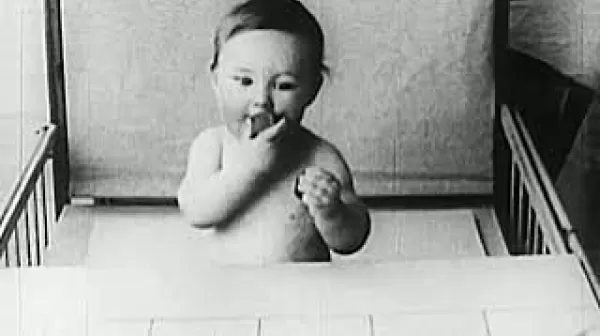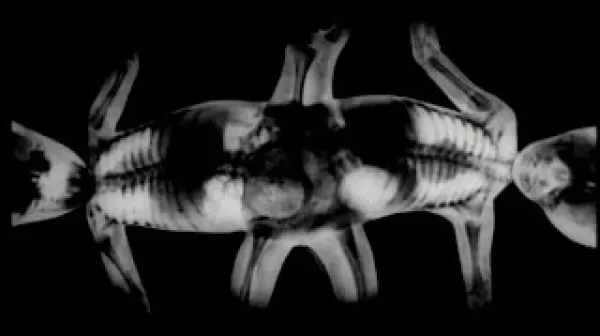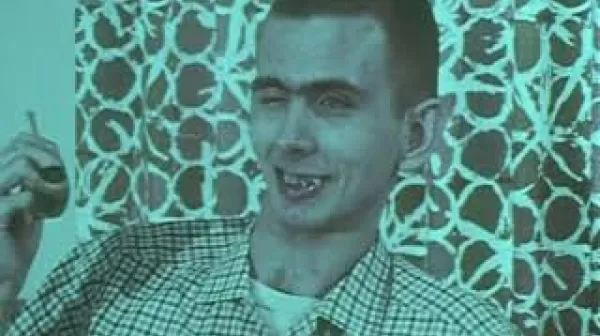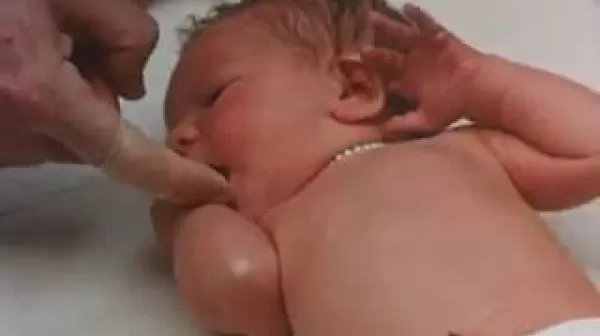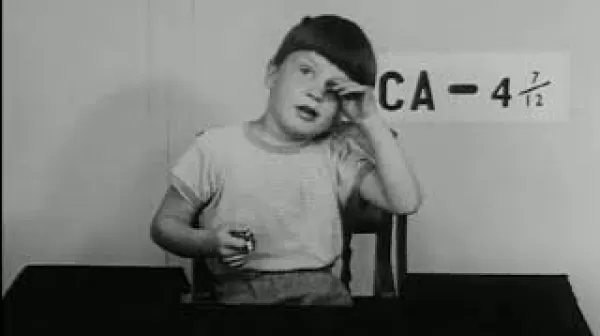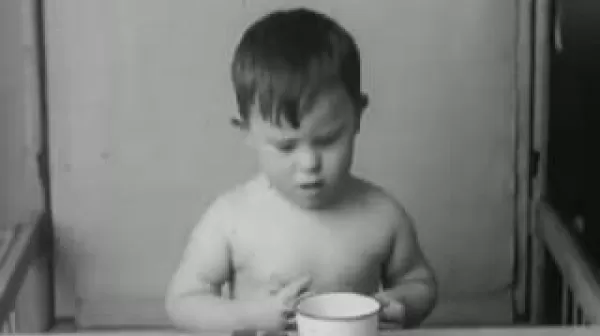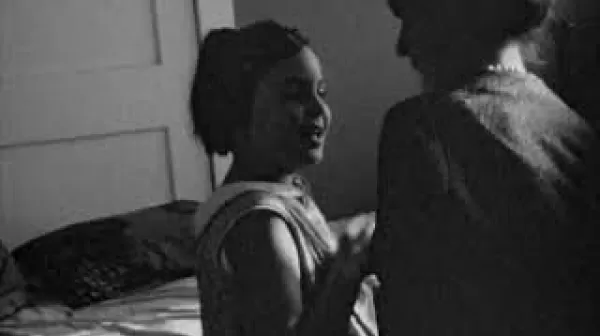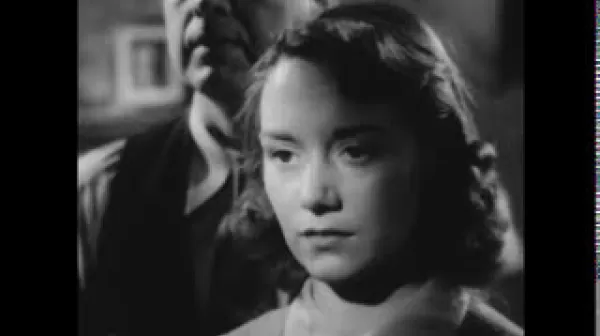Life Begins (Arnold Gesell, 1939)
The first segment of this film is titled "A Baby's Day at Twelve Weeks." Over footage of a 12-week-old baby and his mother, Arnold Gesell of the Yale Clinic of Child Development explains the developmental importance of each aspect of the baby's day, which begins as he wakes, stretches, and yawns. His yawn sends extra oxygen to his brain. Stretching makes his heart beat more strongly. He recognizes his mother and nurses at her breast. He naps in his crib. Gesell says babies show their individuality even in the way they sleep and wake up.

